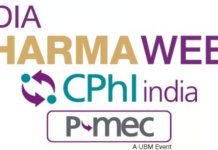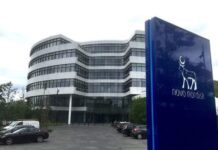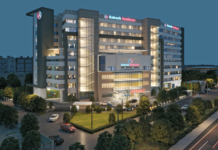New Delhi, December 07, 2019: Thousands of people in India suffer from severe Intellectual Disability (ID) and Autism Spectrum disorder (ASD); they are the most common developmental disorders present in humans. Additionally, they can be found together in the same individual that makes it furthermore complex treatment. According to the World Health Organization (WHO), the IQ of an individual with mental retardation is equal to or less than 70.
Bhavik Mirwani, an 18 years young male from Ahmedabad has Intellectual Disability (ID) and Autism Spectrum disorder (ASD), a condition that affected nearly every aspect of his family’s life after he was diagnosed. Bhavik underwent various treatments ranging from physiotherapy, homeopathy, Ayurveda, but all together could barely benefit him. After years of distress, Bhavik’s mother, Heena Mirwani finally came across Dr. Alok Sharma’s Stem Cell Therapy at NeuroGen Brain and Spine Institutes. At the institute, Bhavik underwent NRRT (Neuro Regenerative Rehabilitation Therapy). The procedure was conducted during November 2018 and ever since the improvements were seen in Bhavik have been monumental.
Bhavik underwent 7 days of treatment of NRRT which is a combination of Stem Cell Therapy followed by Rehabilitation which comprises of Physiotherapy, Occupational Therapy, Aquatic Therapy, Applied Behavioral Analysis, Speech Therapy, etc. This treatment was performed by Dr. Alok Sharma, director of NeuroGen BSI, and his team consisting of doctors and rehabilitation specialists.
Improvements were seen after NRRT
- Improved attention and concentration
- Improved memory, remembers where he has kept required objects
- Partially improved social interaction. Mingles along with familiar and similar-aged children
- Improved posture and gait. Able to balance efficiently
- Can walk and conduct other activities for an extended time period without getting tired soon
- Increased mobility
- Response well to commands and has started indicating his requirements
- speaks mono-syllabically and short sentences
- Toilet training is improved
- Does A. D. L. with moderate assistance and supervision
- “It is a unique privilege to bring some sense of hope for the families having special needs children. There was a time when brain damage during birth was considered irremediable. Therefore, with time and evolution, NRRT treatment has come which is the first-ever treatment introduced by us that commits to bring a positive change in a child’s development before the age of 20, even there is a possibility of complete restoration if the child gets stem cell therapy before the age of 12″ says Dr Alok Sharma, Director of NeuroGen BSI. We want to spread awareness and believe to cure as many cases as possible in forthcoming years; as we have the utmost faith in this treatment. We aim to provide a healthy childhood to our upcoming generation” he added.
The world’s first scientific paper in a medical journal on the efficacy of cell therapy in autism has been published by Dr. Alok Sharma in the journal Stem Cell International in 2014. The Worlds first scientific publication on the benefits of cell therapy in Intellectual disability has also been published by Dr. Alok Sharma in 2018 in the Journal of stem cell research and therapy.
Researchers and doctors are now looking at regenerative therapy using stem cells as a potential therapy for children showing symptoms of mental retardation. Stem Cell Therapy helps is repairing the damage in the above neurological conditions.
“We are overwhelmed by the progress seen in our child after the treatment. It is by God’s grace that our child could get his treatment done at NeuroGen BSI. We do recommend NRRT to other children and parents going through the same difficulty” says Mrs. Heena and Mr. Dilipbhai Mirwani, Bhavik’s parents with utmost satisfaction.
At NeuroGen BSI, the rehabilitation program aims to develop dissociations and gait training, therapies to increase the strength without fatigue. Bhavik was given exercises that helped him improve his balance, walking, stair climbing, cognition, understanding, behavior, command following, posture and his grip. These exercises carried out in a systematic pattern with sufficient rest intervals. Together, the aim of the rehabilitation program was to improve the overall quality of Bhavik’s life. Similar therapies were continued upon going back home.
Corporate Comm India(CCI Newswire)






















